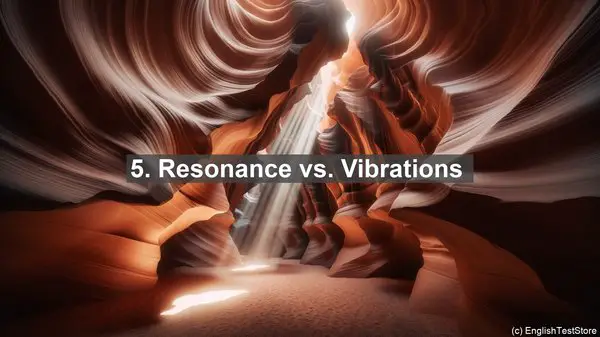Introduction: The Power of Precision
Welcome to our channel. Today, we’re diving into the fascinating world of acoustic engineering. While the field offers immense opportunities, it also presents some linguistic challenges. In this lesson, we’ll explore ten words that are frequently misused or misunderstood. So, let’s get started!
1. Soundproofing vs. Sound Absorption
Often used interchangeably, these terms have distinct meanings. Soundproofing refers to preventing sound from entering or leaving a space, while sound absorption involves reducing sound reflections within a room. While both are essential in acoustic design, the strategies and materials involved differ significantly.
2. Reverberation vs. Echo
Both relate to sound reflections, but they occur in different contexts. Reverberation refers to the persistence of sound in a space due to multiple reflections. It’s crucial to manage reverberation in auditoriums and concert halls. On the other hand, an echo is a distinct repetition of sound, often heard in open environments. Understanding these phenomena helps in creating optimal listening conditions.
3. Frequency vs. Amplitude
These terms are fundamental to understanding sound waves. Frequency refers to the number of complete cycles a wave completes in a second and is measured in Hertz. Amplitude, on the other hand, represents the magnitude or intensity of a sound wave. In simpler terms, frequency determines the pitch, while amplitude determines the volume.
4. Diffusion vs. Absorption
Both these concepts play a role in managing sound reflections. Absorption involves materials that convert sound energy into heat, reducing reflections. Diffusion, on the other hand, scatters sound in multiple directions, reducing the perception of direct reflections. In a well-designed acoustic space, a balance of both is crucial.
5. Resonance vs. Vibrations
Resonance occurs when an object vibrates at its natural frequency, resulting in increased amplitude. Vibrations, on the other hand, refer to any oscillatory motion. Understanding resonance is vital in designing structures that can withstand vibrations without significant amplification.
6. Damping vs. Isolation
Both these techniques are used to reduce vibrations, but they work in different ways. Damping involves dissipating vibrational energy, often through the use of materials with high internal friction. Isolation, on the other hand, aims to prevent the transmission of vibrations from one structure to another.

7. SPL vs. dB
Sound Pressure Level (SPL) and decibels (dB) are both units used to measure sound. SPL refers to the actual pressure exerted by a sound wave, while decibels are a logarithmic representation of sound intensity. The decibel scale is useful as it allows us to express a wide range of sound levels in a more manageable format.
8. Direct Sound vs. Reflected Sound
When we hear a sound, it often reaches our ears through multiple paths. The sound that travels directly from the source to our ears is called the direct sound. Reflected sound, as the name suggests, is the sound that reaches us after bouncing off surfaces. Understanding the interplay between direct and reflected sound is crucial in designing spaces with good speech intelligibility.
9. Impedance vs. Resistance
While these terms are related to the flow of electrical or acoustic energy, they have different meanings. Resistance refers to the opposition to the flow of energy, often resulting in energy conversion to heat. Impedance, on the other hand, is a more comprehensive term that includes both resistance and reactance, which accounts for the effects of capacitance and inductance.

10. Transducer vs. Speaker
In the world of audio, these terms are often used interchangeably. However, there’s a subtle difference. A transducer is a device that converts one form of energy to another. A speaker, on the other hand, is a specific type of transducer that converts electrical energy into sound waves. So, while all speakers are transducers, the reverse is not always true.
